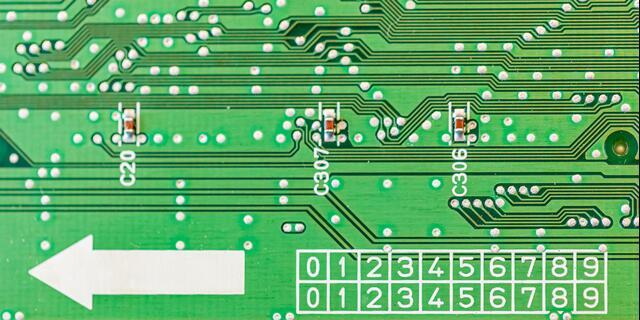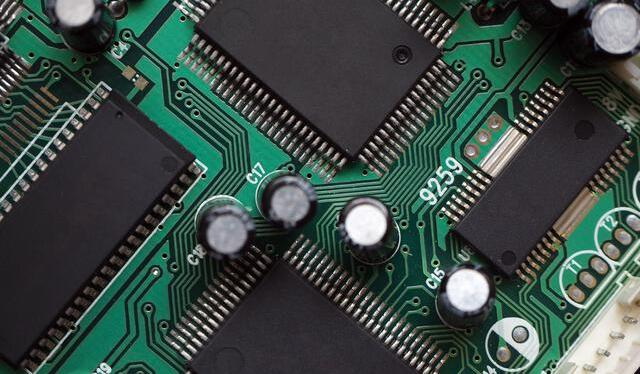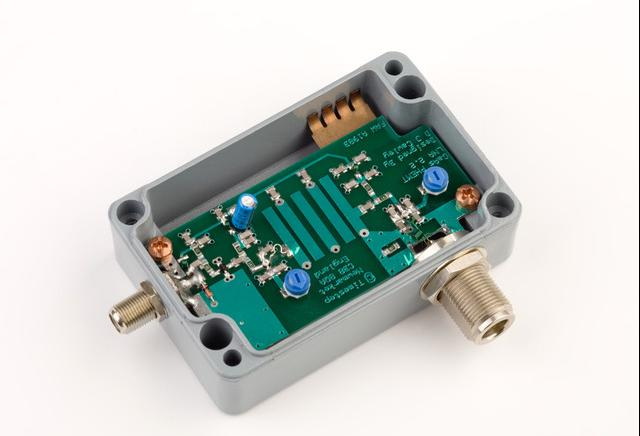Content Menu
● Introduction to Automated SMD PCB Soldering Machines
>> Key Features of Automated SMD PCB Soldering Machines
● Benefits of Investing in Automated SMD PCB Soldering Machines
>> Enhanced Productivity
>> Improved Quality Control
>> Cost Savings
● Types of Automated SMD PCB Soldering Machines
● Challenges and Considerations
● Integration and Optimization Strategies
● Future Trends in Automated SMD PCB Soldering
● Expanded Future Trends
● Enhanced Integration Strategies
● Conclusion
● Frequently Asked Questions
>> 1. What are the primary benefits of using automated SMD PCB soldering machines?
>> 2. How do automated SMD PCB soldering machines improve quality control?
>> 3. What types of automated SMD PCB soldering machines are available?
>> 4. What are the key considerations when investing in an automated SMD PCB soldering machine?
>> 5. How does automation affect the cost of PCB manufacturing?
In the rapidly evolving electronics manufacturing industry, efficiency, precision, and cost-effectiveness are crucial for staying competitive. One of the key technologies driving this advancement is the automated SMD PCB soldering machine. Surface Mount Devices (SMDs) have become the norm in modern electronics due to their compact size and high performance. However, manually soldering these components can be time-consuming and prone to errors. This is where automated SMD PCB soldering machines come into play, offering a solution that enhances productivity, reduces defects, and improves overall manufacturing quality.

Introduction to Automated SMD PCB Soldering Machines
Automated SMD PCB soldering machines are designed to efficiently solder SMDs onto printed circuit boards (PCBs). These machines utilize advanced technologies such as robotics, artificial intelligence (AI), and precision temperature control to ensure consistent and high-quality solder joints. The process typically involves applying solder paste to the PCB, placing the SMDs on designated pads, and then using reflow soldering to melt and solidify the solder, forming a durable bond between the component and the PCB.
Key Features of Automated SMD PCB Soldering Machines
1. Precision and Accuracy: Automated machines can place components with micron-level accuracy, significantly reducing the risk of human error. This precision is essential for complex PCBs where even slight misalignments can lead to defects.
2. High Throughput: These machines can operate continuously without fatigue, assembling PCBs at speeds that human workers cannot match. This increased speed helps manufacturers meet the growing demand for electronic devices.
3. Cost Efficiency: While the initial investment in automation technology can be substantial, the long-term savings are significant. Automation reduces the need for a large workforce, lowers the rate of defects, and minimizes material waste.
4. Flexibility: Automated SMD PCB soldering machines can handle a wide range of components and PCB designs, making them versatile for various manufacturing needs.
Benefits of Investing in Automated SMD PCB Soldering Machines
Investing in automated SMD PCB soldering machines offers several benefits that can transform your manufacturing process:
Enhanced Productivity
- Continuous Operation: Automated systems can operate 24/7, allowing for continuous production without breaks. This capability is crucial for meeting tight deadlines and high-volume orders.
- Reduced Labor Costs: By automating the soldering process, manufacturers can significantly reduce labor costs associated with manual soldering. This reduction in labor also minimizes the risk of human errors.
Improved Quality Control
- Precision Soldering: Automated machines ensure that solder joints are formed with high precision, reducing defects and improving the overall reliability of the PCBs.
- Automated Optical Inspection (AOI): Many automated systems include AOI capabilities that inspect solder joints for defects, further enhancing quality control.
Cost Savings
- Reduced Material Waste: Automated systems minimize material waste by ensuring accurate placement and soldering of components.
- Lower Rework Costs: With fewer defects, the need for costly rework is significantly reduced, leading to long-term cost savings.
Types of Automated SMD PCB Soldering Machines
The choice of automated SMD PCB soldering machine depends on production volume, component size, and specific manufacturing requirements. Some common types include:
- Reflow Ovens: Suitable for small to medium batch production, these systems use a conveyor to transport PCBs through heated zones for soldering.
- Wave Soldering Machines: Ideal for high-volume production, these machines generate a solder wave to solder exposed leads and pads uniformly.
- Selective Soldering Systems: Used for soldering specific components or complex assemblies, these systems are precise and flexible.
- Soldering Robots: Combining precise motion control with consistent heat delivery, these are used in advanced industries like aerospace and electronics.

Challenges and Considerations
While automated SMD PCB soldering machines offer numerous advantages, there are challenges and considerations to keep in mind:
- Initial Investment: The cost of purchasing and integrating automated systems can be high.
- Training and Maintenance: Operators need training to manage and maintain these complex machines effectively.
- Component Compatibility: Ensuring that the machine is compatible with the range of components used in production is crucial.
Integration and Optimization Strategies
To maximize the benefits of automated SMD PCB soldering machines, manufacturers should focus on integration and optimization strategies:
- Integration with Existing Systems: Ensuring seamless integration with existing manufacturing systems can enhance workflow efficiency and reduce downtime.
- Optimization of Production Processes: Regularly optimizing production processes can help identify bottlenecks and improve overall manufacturing efficiency.
- Continuous Monitoring and Feedback: Implementing systems for continuous monitoring and feedback can help identify areas for improvement and ensure that the automated systems are operating at optimal levels.
Future Trends in Automated SMD PCB Soldering
The future of automated SMD PCB soldering is promising, with advancements in AI, robotics, and IoT technologies expected to further enhance precision, speed, and flexibility. Trends include:
- Increased Use of AI: AI can optimize production processes, predict maintenance needs, and improve quality control by analyzing real-time data.
- Advanced Robotics: Next-generation robotics will offer even greater precision and flexibility, enabling the handling of smaller components and complex PCB designs.
- Integration with Smart Manufacturing Systems: Integration with smart manufacturing systems will enable real-time monitoring, predictive maintenance, and optimized production planning.
Moreover, the integration of machine learning algorithms will allow for predictive analytics, enabling manufacturers to anticipate and address potential production issues before they occur. This proactive approach will further enhance the reliability and efficiency of automated SMD PCB soldering machines.
Expanded Future Trends
The integration of advanced technologies such as machine learning and IoT will further enhance the capabilities of automated SMD PCB soldering machines. Machine learning algorithms can analyze production data to predict potential issues, optimize soldering parameters, and improve quality control. IoT integration enables real-time monitoring and remote control, allowing for more efficient management of production lines.
Moreover, advancements in robotics will lead to more versatile and precise handling of components, enabling the assembly of complex PCBs with ease. This will be particularly beneficial for industries requiring high reliability and precision, such as aerospace and automotive electronics.
Enhanced Integration Strategies
Effective integration of automated SMD PCB soldering machines with existing manufacturing systems is crucial for maximizing efficiency. This includes integrating with material handling systems to automate the supply of components and PCBs, as well as integrating with quality control systems to ensure seamless inspection and testing processes.
Additionally, implementing data analytics tools can help in optimizing production workflows by identifying bottlenecks and areas for improvement. This data-driven approach ensures that manufacturing processes are continuously refined to meet changing market demands.
Conclusion
Investing in an automated SMD PCB soldering machine is a strategic decision that can significantly enhance the efficiency, quality, and cost-effectiveness of your manufacturing operations. By leveraging advanced technologies like robotics and AI, these machines provide precision, speed, and reliability that manual soldering cannot match. As the electronics industry continues to evolve, embracing automation will be key to staying competitive and meeting the demands of a rapidly changing market.

Frequently Asked Questions
1. What are the primary benefits of using automated SMD PCB soldering machines?
- The primary benefits include increased productivity, improved precision, reduced labor costs, and enhanced quality control. Automated machines can operate continuously, reducing the risk of human error and improving overall manufacturing efficiency.
2. How do automated SMD PCB soldering machines improve quality control?
- Automated machines improve quality control by ensuring precise soldering and often include automated optical inspection (AOI) systems to inspect solder joints for defects. This reduces the likelihood of faulty PCBs reaching the market.
3. What types of automated SMD PCB soldering machines are available?
- Common types include reflow ovens, wave soldering machines, selective soldering systems, and soldering robots. Each type is suited for different production volumes and component requirements.
4. What are the key considerations when investing in an automated SMD PCB soldering machine?
- Key considerations include the initial investment cost, training and maintenance needs, and ensuring compatibility with the range of components used in production.
5. How does automation affect the cost of PCB manufacturing?
- Automation reduces long-term costs by minimizing labor needs, lowering defect rates, and reducing material waste. While the initial investment can be high, the long-term savings are significant.




















